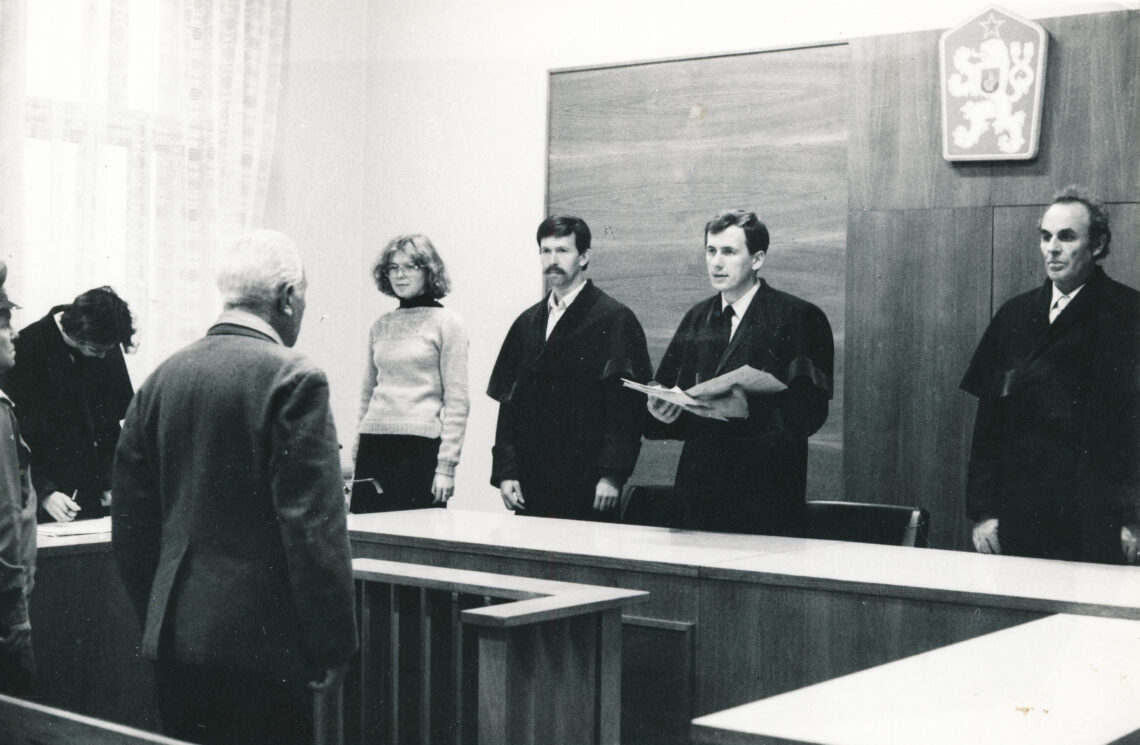
Editorial | Volume 22 No. 7
Esteemed Readers,
Dear friends,
Allow me to exceptionally begin with a housekeeping issue. While preserving its cherished identity, the German Law Journal is expanding geographically. It is my great delight to introduce you to the twelve colleagues from all corners of the world that have recently joined our board. Having them “on board” reminds us that the “German” in our name is a non-parochial reminder of our situatedness and contextuality, within which all law operates.
Here is the list: Mor Bakhoum (Université Virtuelle du Senegal); Antonia Baraggia (U Milano Statale); Alberto Coddou McManus (U Austral); Ignacio Cofone (McGill); Irina Domurath (U van Amsterdam and Catolica, Chile); Klaas Eller (U van Amsterdam); Berihun Gebeye (MPI Heidelberg); Yong Lim (Seoul National University); Aquilah Sandhu (U Augsburg); Regis Simo (U Pretoria); Clara Rigoni (MPI Freiburg); Inge Van Hulle (MPI Legal History & Legal Theory).
***
The judgment in case K 3/21 of the Polish Constitutional Tribunal (PCT) is sending shockwaves throughout Europe. Defenders of the judgment put it on a par with the infamous Weiss judgment of the Bundesverfassungsgericht (see our special section). More nuanced observers were quick to stress crucial differences between both judgments—and both courts. Yet the spirit was out of the bottle, sowing the seed of doubt about the legitimacy of EU action against the decay of the rule of law. As it presumably says in some playbook for autocrats, something will always stick.
But there is a deeper story to the decline of the rule of law in Central and Eastern Europe (CEE). Our special issue vol. 22#7 on “Judges Under Stress”, which I have the pleasure of introducing to you today, tracks shadows of autocracy in the judiciary in CEE countries that survived the transition to democracy. Curated by Hans Petter Graver and Peter Čuroš from Oslo University, the special issue offers a profound, historically informed analysis of the institutional past to explain the vulnerability of the judiciary in Central and Eastern Europe when put under pressure by governments.
In their introduction, the guest editors Hans Petter Graver and Peter Čuroš explain their research framework. It identifies the informal structures and policies within judicial institutions as the crucial factors creating path dependencies, leading to continuities across historical ruptures despite changes in the formal rules. The following contribution by James Moliterno and Peter Čuroš provides an overview of the attacks on the judiciary in various CEE countries, which bring the informal undercurrents bequeathed from communism to bear, and compare them to the situation in the US.
The subsequent contributions track such patterns of persistence for different countries. Drawing on the example of Romania, Cosmin Cercel seeks to carve out core features of the authoritarian judiciary, which in his view manifests itself in its approach to states of exception. A comparison between the interwar period and today reveals relevant continuities. Staying with Romania, Bogdan Iancu studies how the post-1989 practice of “lustration” in the judiciary lived on and was turned to other uses, continuing a much longer tradition of politically motivated purges.
The administration of justice is at the heart of Judge Zdenek Kühn’s article. At the example of the Czech and Slovak republics, he argues that the judiciary in the continental legal tradition often lacks the formal and informal resources needed to uphold the rule of law in the face of autocracy, with hierarchy and the continental style of legal reasoning playing particularly fateful roles. Peter Čuroš adds to this analysis by exposing a specific habitus prevalent in the Slovak judiciary. While the habitus of the judicial elite under the communist regime enabled mechanisms of formal and informal control of the judiciary, these mechanisms have now taken a more sinister turn and are used to sustain corruption.
Turning to Hungary, Mátyás Bencze argues that the bureaucratic organization of the judiciary opens avenues for resistance as well as for deference to autocratic governments. Zoltán Fleck reveals some features of authoritarian legal culture that could thrive in the Hungarian judiciary throughout various oppressive regimes, never allowing the development of an independent judiciary. Zoltán Szente demonstrates similarities between the late communist and contemporary regimes in Hungary in respect of the formal and informal mechanisms enabling governments to undermine judicial independence. The last contribution on Hungary is by Fruzsina Gardos-Orosz, who tracks similarities in the understanding of the role of the judicial branch of government between the communist regime and today.
The special issue concludes with a comprehensive analysis of the judiciary and its relationship with civil society in Poland by Łukasz Bojarski. The author holds that civil society organizations have played a significant role especially in managing the democratic transition on the part of the judiciary and in anchoring the rule of law in the Polish public. Civil society organizations might therefore hold one of the keys to strengthening the rule of law.
I am deeply indebted to the authors and guest editors, and last but not least, to Jud Mathews and David Kosar from our board for their diligence and dedication in bringing this project to fruition.
As always, happy reading!
Matthias Goldmann
On behalf of the Editorial Board







